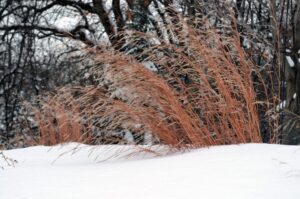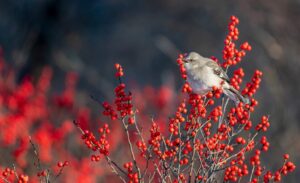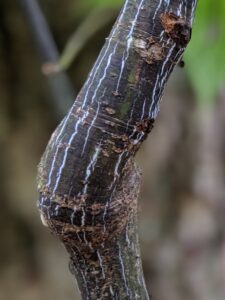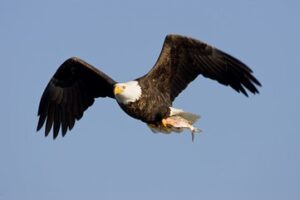December is the darkest time of year. It’s when the sun shines the least as the Earth is tilted far away from the sun. But we celebrate the winter solstice and the rebirth of the sun and make things cheerful with candles and lights. Similarly, nature lights up the landscape in its own way. Inspired by bringing light to the dark, I’d like to highlight some of nature’s bright beauty at this time of year.

Snow! Sometimes the snow is so bright it is blinding. Snow drifting, snow falling, and snow standing on our native grasses (such as switchgrass and little bluestem) is particularly beautiful. There’s no need to cut down your grasses. Leave them standing for habitat and watch the bright white grass tufts float in the wind covered with snow.

As you walk in the woods at this time of year, keep an eye out for beech leaves. They are one of the few trees to hold onto their leaves through the winter. When the pale tan beech leaves are backlit with the sun, they can light up your way through the woods.

Winterberry is a shrub native to the Northeast with exceptionally brilliant red berries. The red berries are toxic to you and me but are a critical food source for our local birds. When there is little other selection of food to eat at this time of year, birds will start chowing down on the winterberries. I find the red berries to be a wow factor in the dark of winter, especially with a backdrop of snow.

Our native striped maple tree is found growing throughout Westchester’s preserves. It is a gem to spot one as they are few and far between, appearing on the “Special Concern” list according to Westchester County Parks. But when you spot one, you will know since the bark is so incredibly unique. The bark of young striped maples is green and covered with white stripes and streaks. This green-white combo is striking as it shines through the forest.

The winter is a prime time to look for bald eagles. They are easily identified with their white heads and dark brown feathers. In the winter, bald eagles will gather near open water where they can more easily find food including fish and carrion. Keep a look out for these inspiring beings as they soar overhead and light up the sky.
On crisp cold nights the stars shine their brightest. So, sunlight, snowlight, moonlight or starlight; winter is a season to behold.
Amanda Bayley is the CEO & Co-Founder of Plan it Wild, a sustainable land management company that is bringing back native habitats to Westchester yards. www.PLANitWILD.com.







